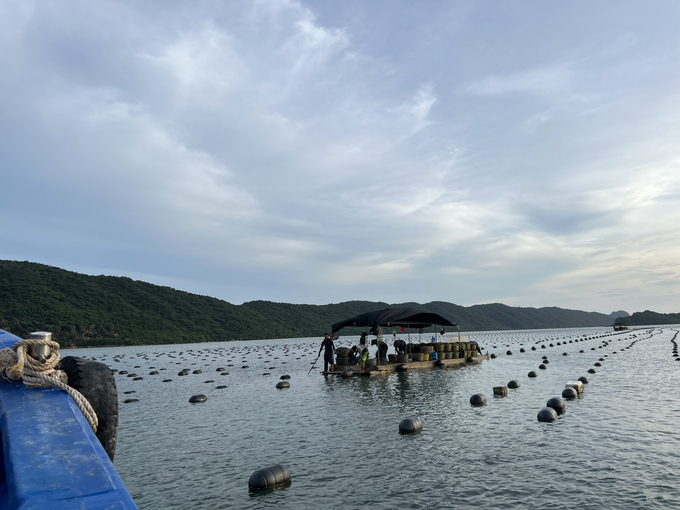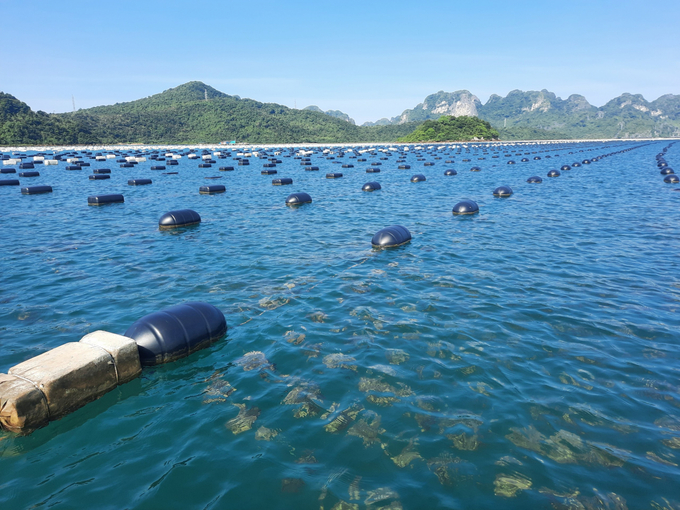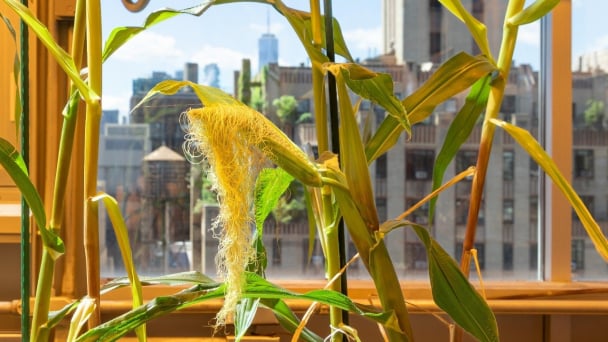June 4, 2025 | 08:03 GMT +7
June 4, 2025 | 08:03 GMT +7
Hotline: 0913.378.918
June 4, 2025 | 08:03 GMT +7
Hotline: 0913.378.918

Farmers in Van Don district have gradually converted from styrofoam floats to HDPE floats in aquaculture. Photo: Nguyen Thanh.
The majority of aquaculture farmers in Ban Sen commune, Van Don district, Quang Ninh are familiar with caged production using traditional materials such as styrofoam, bamboo, and wood. Styrofoam floats have excellent buoyancy, but their average lifespan is between 2 and 3 years.
Due to an overreliance on styrofoam floats, cages, and wooden rafts, farmers suffer heavy losses during the rainy season. In addition, damaged styrofoam floats that drift to the ocean are difficult to collect, polluting the water environment and affecting the ecosystem.
With a buoyancy level similar to that of styrofoam floats, aquaculture floats and cages made from HDPE plastic feature a sustainable structure and adaptability to climate change. Their lifespan is estimated to be between 30 and 50 years. HDPE floats and cages can withstand big waves and strong wind.
Additionally, HDPE plastic is an extremely durable material that is resistant to high impact, safe to use in water sources without being corroded or rusted by the saline water environment. The conversion to aquaculture production utilizing HDPE plastic is environmentally friendly. This material can help limit the impact on the water environment as well as promote the growth of seeds.
There are currently 890 households in Ban Sen commune engaged in aquaculture; 70% of which is still using styrofoam floats. Ban Sen Commune People's Committee has encouraged multiple upper-class households to convert to using HDPE material. The commune will mobilize the remaining households with the aim of reaching 100% of local aquaculture households using floating materials that meet provincial standards. As a result, Ban Sen commune has managed to remov 160,250 styrofoam floats between 2019 and 2022. Subsequently, 113,272 HDPE floats had been converted by September 2022.
Although most farmers believe that this conversion of materials is beneficial to mitigating damages caused by natural disasters, the investment capital for each HDPE cage is nearly 2 times higher copared to that of traditional wooden cages. The initial investment cost is substantial, causing difficulties for most marine aquaculture farmers without the support from the government or businesses.
Aquaculture establishments and households are still facing countless challenges due to the impact of the Covid-19 pandemic. The average selling price of aquatic products is lower compared to that of previous seasons, limiting aquaculture farmers' ability to invest in converting from styrofoam floats to HDPE cages in accordance with local standards.
Moreover, most of the aquaculture households have established a long-standing habit of relying on styrofoam floats over the years, so they are hesitant to convert and use floats made from standardized materials in accordance with local regulations.

Van Don district is determined to remove all styrofoam floats before this April 30. Photo: Nguyen Thanh.
Mr. Pham Van Long, a farmer in Van Don district, expressed his wish for the bank to establish a support policy with preferential interest rates so that farmers can loan money and convert to HDPE cages. Businesses should also establish mechanisms and policies to support and encourage the supply of products and materials for the local people. Additionally, local authorities need to connect with production units to provide extensive information including categories, types, materials and prices so that farmers can invest accordingly.
Mr. Truong Manh Hung, Secretary of Van Don District Party Committee, reported that the local authorities have strengthened its inspection and supervision. They have requested households not to buy new styrofoam floats to use in aquaculture production, any violations are strictly handled. In addition, the collection and destruction of styrofoam floats after conversion must also be taken into account in accordance with the regulations on environmental protection.
"The district has guided the conversion of aquacultural float materials for 959 aquaculture establishments by the end of 2022. Namely, we have reduced the number of households using styrofoam floats to 352, down by 1,100 hectares compared to the beginning of the year. There are currently 607 households remaining that still use styrofoam floats; 4.2 million floats have been removed and converted. The total number of styrofoam floats to be converted is estimated to be around 700,000. The district aims to remove all styrofoam floats in the area by April 30", emphasized Mr. Hung.
In 2023, Van Don district will focus on solving underlying issues in the management and use of land, water surface, implementing land allocation, land lease, and water surface rental to serve the development of the aquaculture industry. Furthermore, the district will deploy the marine aquaculture development project in Van Don district, Quang Ninh province until 2030, with a vision towards 2045.
Translated by Nguyen Hai Long

(VAN) Technology is redrawing the map of Vietnamese aquaculture: more modern, greener, and more sustainable.

(VAN) Novel process harnesses machine learning to reveal groups of genes that determine how efficiently plants use nitrogen.

(VAN) Several scientists and farmers are experimenting with soil treatment in some key durian-growing regions such as Cai Lay (Tien Giang), Dak Song, Gia Nghia, and Dak R’lap (Dak Nong).
/2025/05/25/4127-3-073637_820.jpg)
(VAN) Thanks to the promotion from an FAO-implemented project, vegetable production in greenhouses in Moc Chau has seen strong development, from 1.5 hectares in 2021 to nearly 50 hectares in 2024.

(VAN) FAO has recently supported USD 140,000 to implement the project 'Risk mitigation human-animal interface risks through disease control initiatives in pig farming.'

(VAN) The People's Committee of Tra Vinh province has approved an adjustment to the investment policy for the Green Hydrogen Plant project, increasing its area to approximately 52.76 hectares.
![Reducing emissions from rice fields: [2] Farmers’ commitment to the soil](https://t.ex-cdn.com/nongnghiepmoitruong.vn/608w/files/news/2025/05/05/dsc08881jpg-nongnghiep-140632.jpg)
(VAN) Clean rice cultivation model in Thuong Tan commune, Bac Tan Uyen district, is assisting local residents in achieving sustainable agriculture by substantially reducing costs, increasing productivity, and protecting the environment.